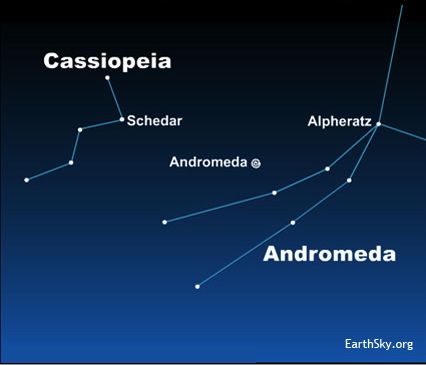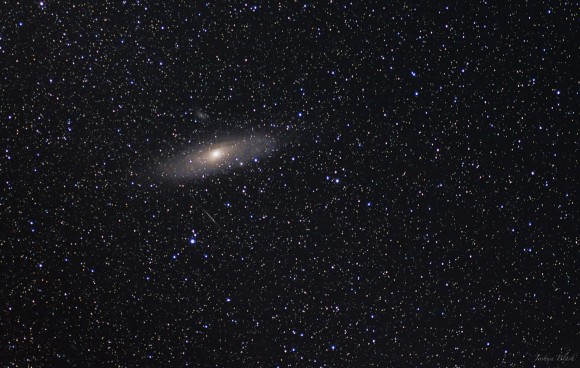
Tonight, if you have a dark sky, try star-hopping to the Andromeda galaxy from the constellation Cassiopeia the Queen. If your sky is truly dark, you might even spot this hazy patch of light with no optical aid, as the ancient stargazers did before the days of light pollution.
What if your sky is more lit up, and you can’t find the Andromeda galaxy with the eyes alone? Some stargazers use binoculars and star-hop to the Andromeda galaxy via this W-shaped constellation.
Cassiopeia appears in the northeast sky at nightfall and early evening, then swings upward as evening deepens into late night. In the wee hours before dawn, Cassiopeia is found high over Polaris, the North Star. Note that one half of the W is more deeply notched than the other half. This deeper V is your “arrow” in the sky, pointing to the Andromeda galaxy.
The Andromeda galaxy is the nearest large spiral galaxy to our Milky Way. It’s about 2.5 million light-years away, teeming with hundreds of billions of stars.
Enjoying EarthSky so far? Sign up for our free daily newsletter today!


Bottom line: You can find the Andromeda galaxy using the constellation Cassiopeia as a guide. Remember, on a dark night, this galaxy looks like a faint smudge of light. Once you’ve found it with the unaided eye or binoculars, try with a telescope if you have one.
Use the Great Square of Pegasus to find the Andromeda galaxy











